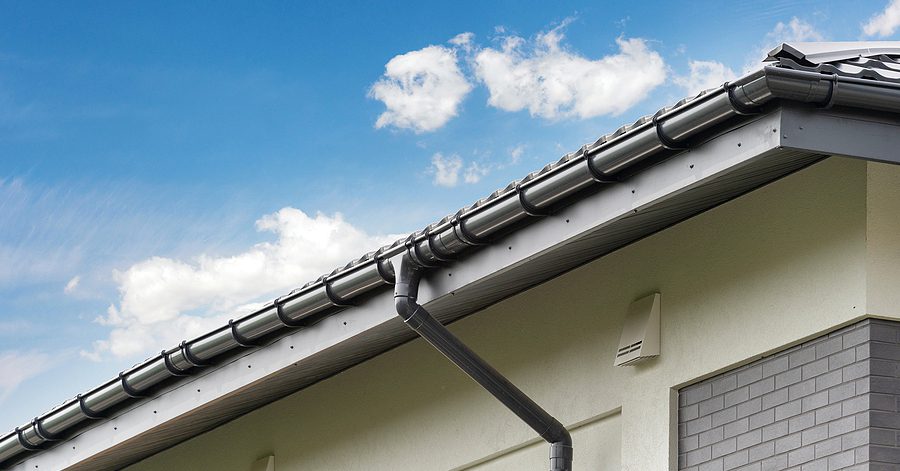What Is Gutter Pitch or Slope & Why Should I Care?

No matter where you live, every home needs a good gutter system to prevent rainwater from damaging the structure, flooding the basement, weakening the foundation, and eroding the landscape. However, the gutter system is only as good as the gutter slope. Your gutter slope is a critical calculation and aspect of your complete gutter system.
And without a proper gutter slope, your gutters will be unable to perform the critical functions they're designed to do. At Ned Stevens Gutter Cleaning of Long Island, we can help. Whether you're looking for gutter repair or new gutter installation, we offer decades of experience helping homeowners protect their property.
We are experts in correctly installing the gutters so that the water flows toward the downspouts instead of over the front gutter lip and onto the surrounding property. Let's take a closer look at the importance of gutter slope, how it protects your property, and why it's a sound decision to reach out to the team at Ned Stevens Gutter Cleaning of Long Island for cleaning and inspection.
What is Gutter Slope?
Backed up gutters and standing water can be signs that your gutters are improperly pitched. The gutter slope, also called the pitch, is the amount of downward slant or angle assigned at certain points along the length of the gutter. Typically, the slant is so subtle that the gutters still appear parallel to the roofline from a distance.
Many homeowners try to save money by hanging their own gutters not realizing there is a science behind water runoff and overall gutter efficiency. Even if you have some experience, you may not know how to create the "perfect" pitch to suit your home. In fact, establishing the proper slope of the guttering can be challenging even for seasoned professionals.
Why is Gutter Pitch Important?
The slope helps the water to flow downward to the downspouts. If there is not enough slope, the water will pool in the gutters leading to leaks, overflows, and water damage. Pooling can occur even in debris-free gutters. Similarly, a sharp downward angle can pose problems, such as reducing the amount of water the system can handle.
The gutter will also look awkward when viewed from the side. Another important factor is to have it sloping toward the nearest downspout. In the case of homes with downspouts at both ends, the slope should start at the centerpoint of the gutter run and slope downwards toward the downspouts. Here are some other potential problems resulting from incorrect pitch/slope:
Keep These Gutter Slope Rules Straight!
To avoid potential problems there are some standard gutter sloping rules to follow.
¼-inch Slope for Every 10 Feet
A good rule of thumb when sloping is to set a quarter inch of slope for every ten feet of guttering. Of course, factors such as the structure of the roof, type of gutter, and gutter length will influence the distance between the pitches and the depth of the slopes.
Pitched to the Nearest Downspout
Another important rule is all guttering must pitch toward the nearest downspout. For example, if you're working with a 25-foot section of gutter, that’s a factor of 2.5 (25 foot gutter divided by 10’ segments - remember it’s ¼” every 10 feet) and the downspout end of the gutter should be set 5/8 of an inch lower (1/4 x 2.5 = 5/8) than the other/higher end.
One Downspout for Every 20-40 Feet
It is also recommended that you install one downspout for at least every 20 to 40 feet of guttering, depending on several factors such as the roof line, roof slope, height and distance of trees and foliage, roof valleys, etc. These rules usually apply whether you're getting new gutter installations or replacement gutters.
Contact Ned Stevens for the Best Gutter Pitch/Slope
Improper gutter pitch can undermine the functions of the entire system. The correct pitch helps to protect your property and and save you from unnecessary expenses. Now that you know why sloping is so important, you may be tempted to try and adjust the guttering yourself. However, finding the perfect pitch or slope takes practice, experience, and precision. At the same time, and possibly more importantly, we all know that climbing ladders can be extremely dangerous!
The recommended course of action is to contact the pros at Ned Stevens Gutter Cleaning of Long Island to examine the gutter pitch and fix any existing problems. We will properly establish the slope at the correct areas along the length of the gutter and ensure there are enough downspouts to accommodate the rainfall capacity. In some cases, we can also re-pitch the gutters correctly even if a repair or new installation isn't needed.
Contact Ned Stevens Gutter Cleaning of Long Island today!

